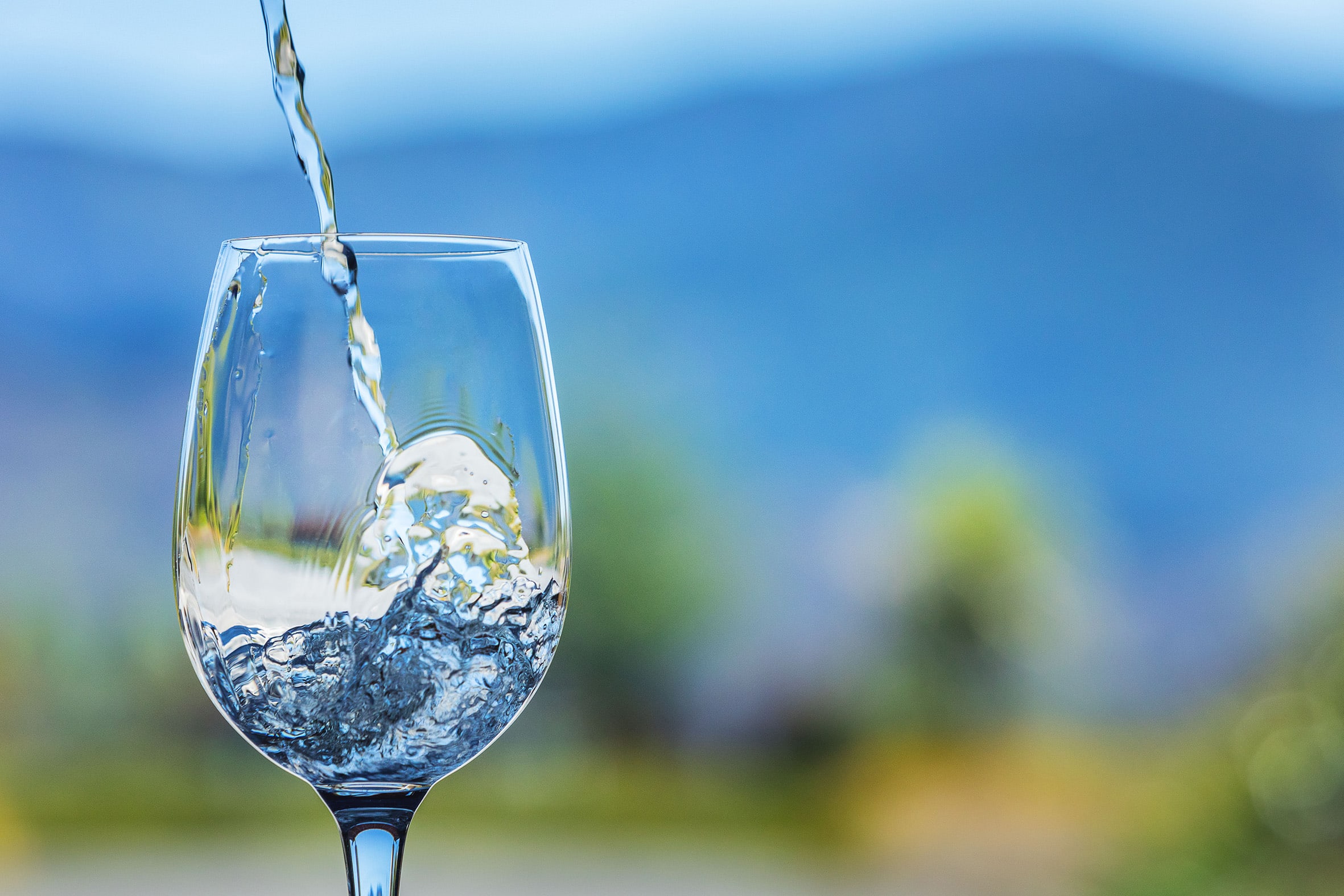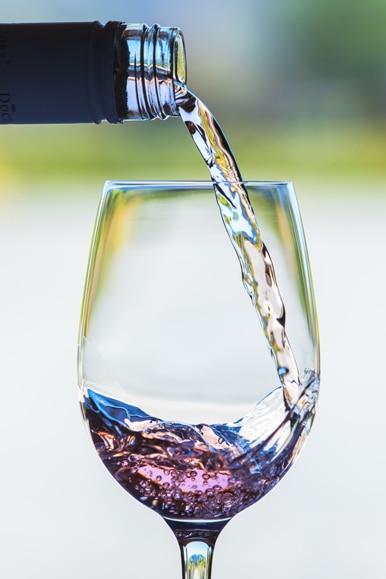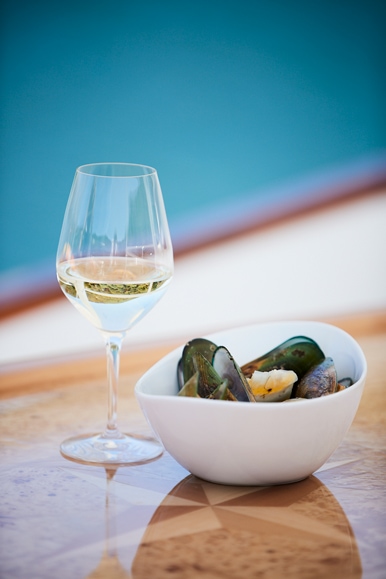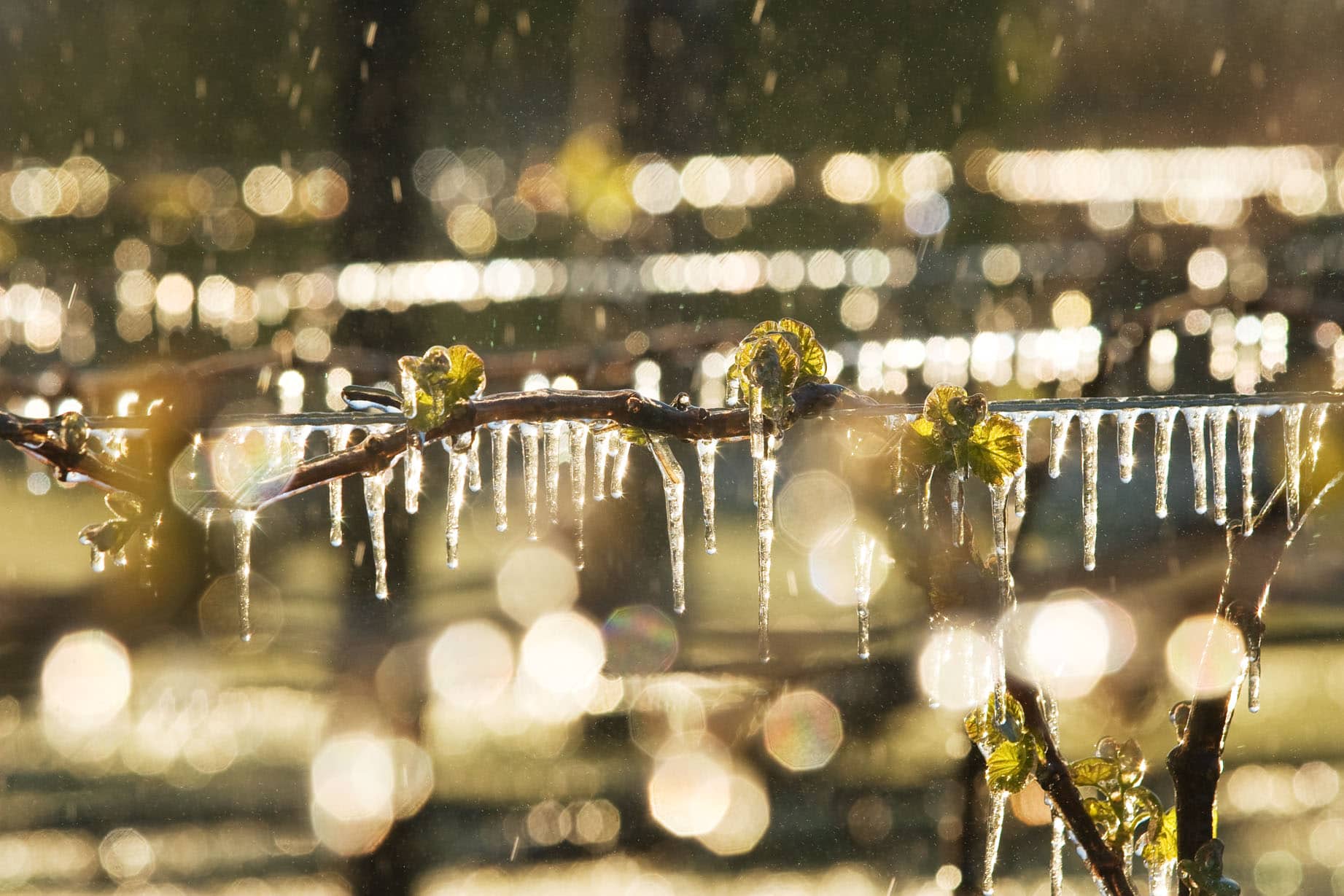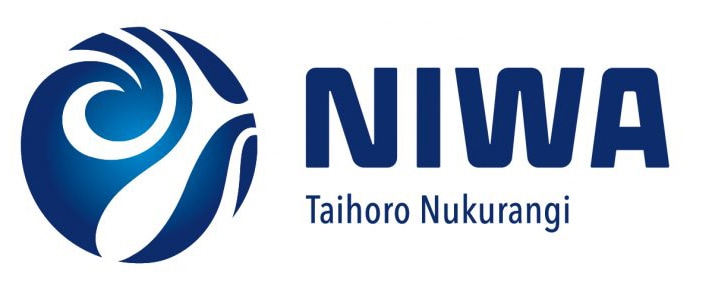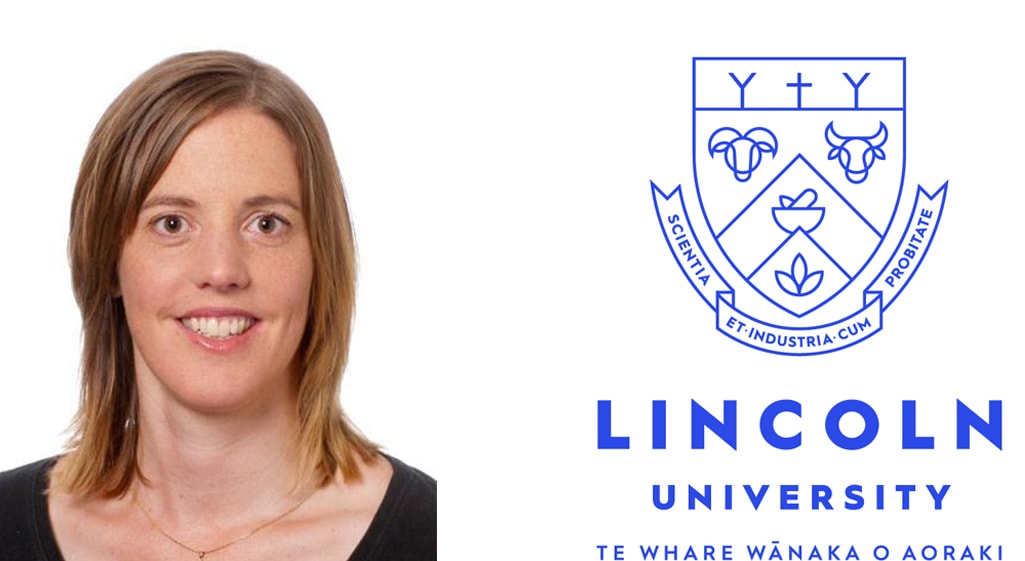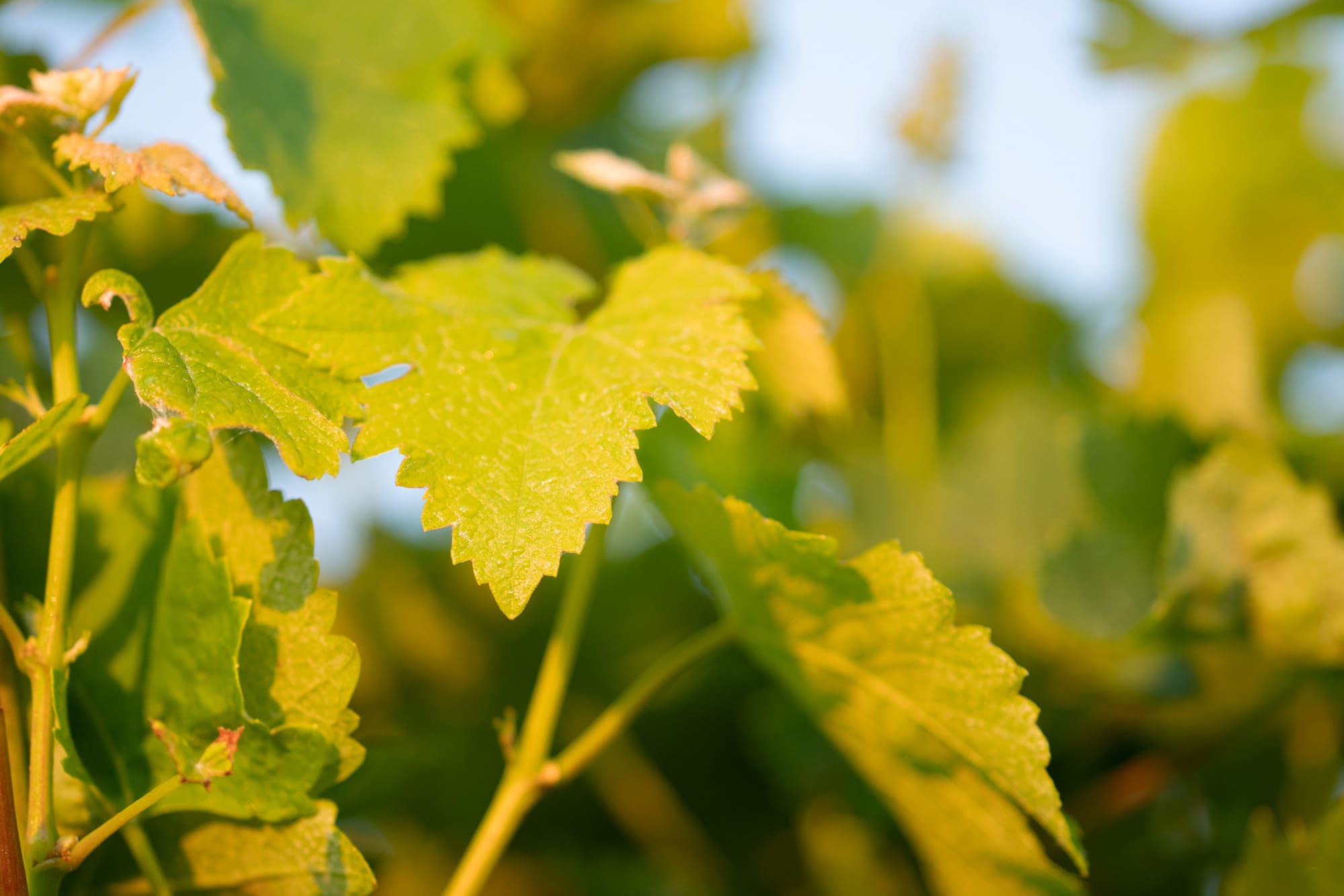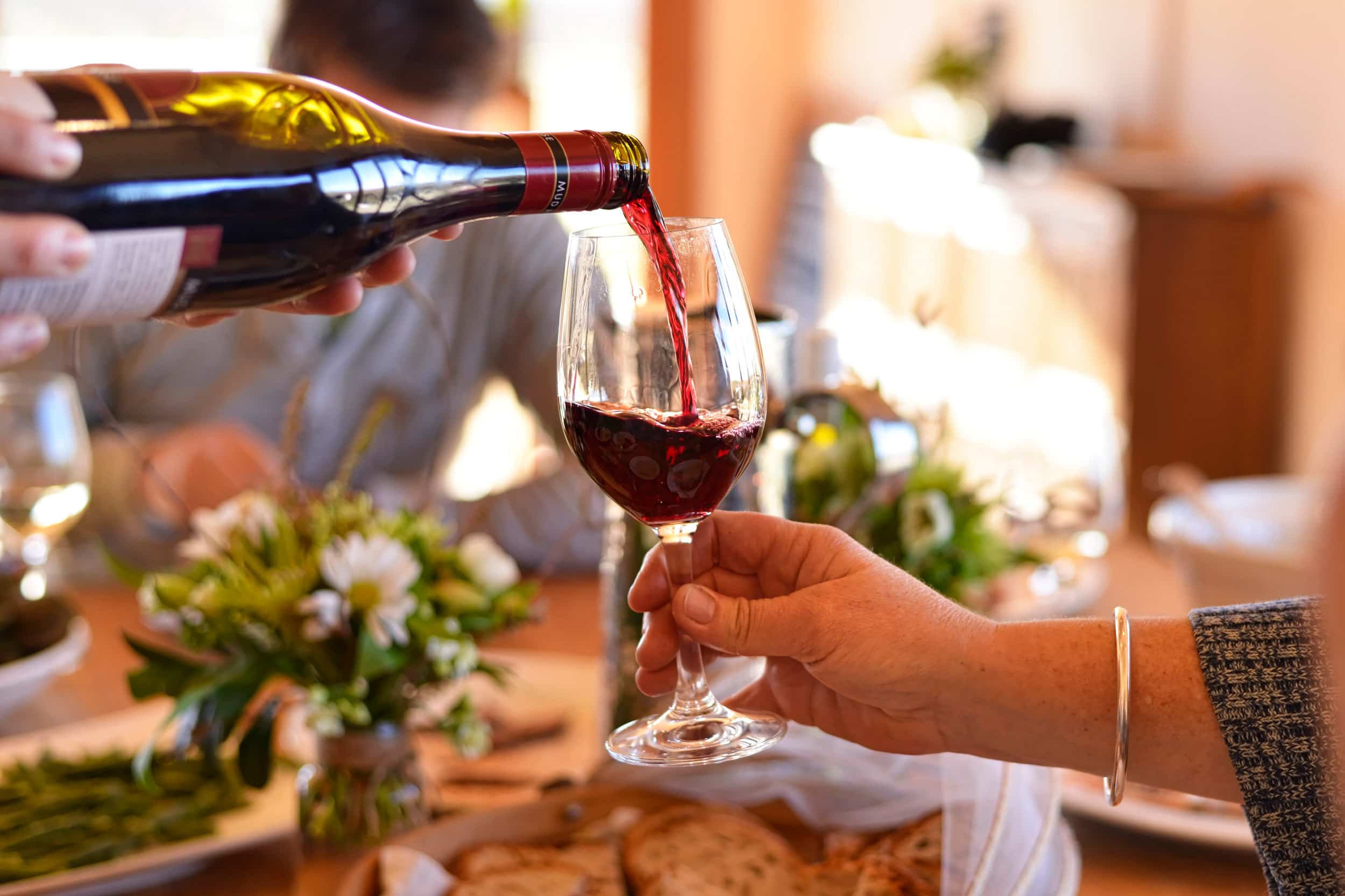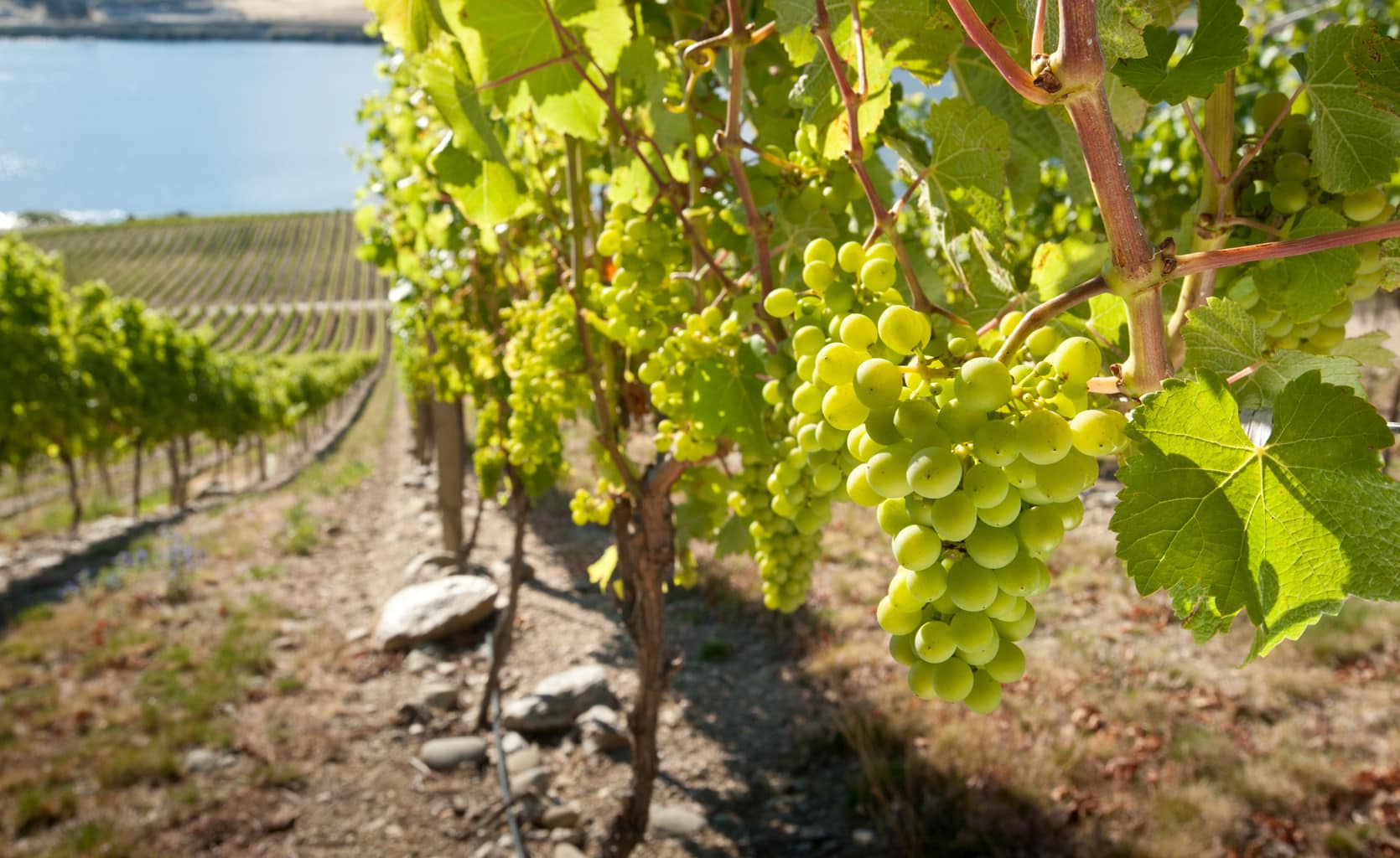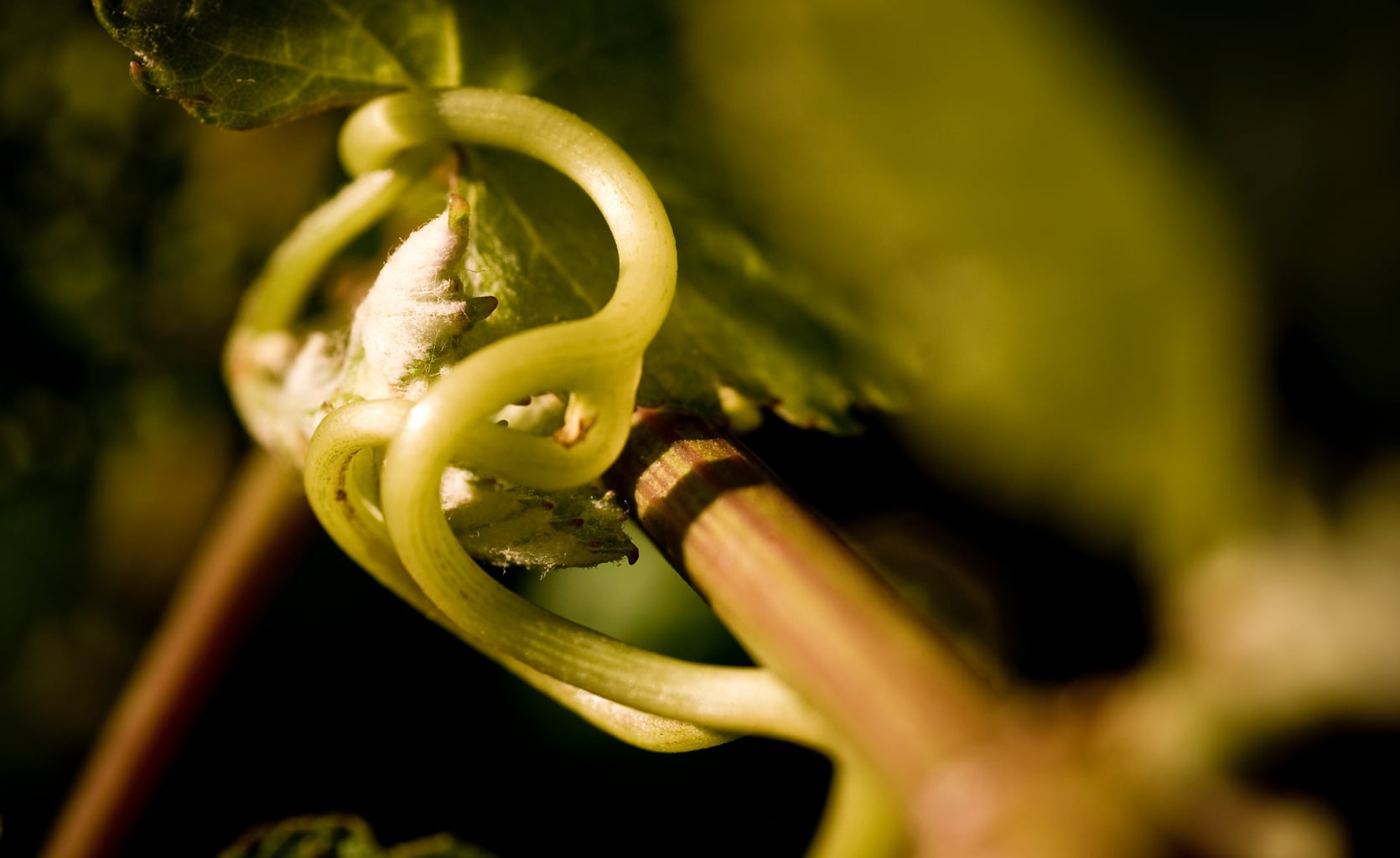Ngarita Warden, Dr Paul Epee and Rhea Gaikwad, Bragato Research Institute
Climate modelling by researchers at Lincoln University and Plant & Food Research forecast that Marlborough will be hotter, more humid, and have increased rain events at crucial vine growth periods over time. As a grape variety, Albariño makes a similar style of wine to Sauvignon Blanc but is reported to have thicker skins in comparison to Sauvignon Blanc. This means Albariño is more tolerant to diseases such as powdery mildew, downy mildew and botrytis, which will naturally increase in incidence and severity with higher temperatures, rainfall and humidity.
Albariño in New Zealand is currently managed using conventional Sauvignon Blanc management practices (two-three cane vertical shoot positioning (VSP) and fruit exposure via leaf plucking). This management differs greatly from the pergola-based trellis system used for Albariño in Galician viticulture. It might not be suitable for mechanising and optimising this varietal’s potential in the New Zealand production context.
Summary of methods
Vineyard
This trial was established in a commercial vineyard block (Awatere Valley, Marlborough) planted with Albariño grafted on an unknown rootstock. Vines were pruned in winter 2023 according to a randomised design over two vine rows, three cane VSP for the control (3Cane), retaining six upright canes for the first treatment (6VCane23), and four cane VSP (4Cane) for the second treatment. On 6VCane23, every second bud was removed, resulting in an average total vine retained node number of 44. On 3Cane and 4Cane vines, no bud was removed, resulting in an average total vine retained node number of 29 and 39, respectively.
Budburst percentage was measured by counting the total number of shoots per vine after budburst divided by the vine retained node number. Canopy development was assessed at four time points between budburst and veraison. The exposed leaf area (ELA) was measured by taking canopy photos on a blue photo backdrop of 1.5m high over 2.0m wide. Photos were then transferred to ImageJ; canopy coverage was the ratio of ELA over the photo backdrop area (3.0m2).
Between veraison and harvest, 60 berries per bay were randomly sampled fortnightly. Each sample was weighed, crushed, and sieved, and the juice was extracted for analysis. TSS (total soluble solids), titratable acidy (TA) and hydrogen potential (pH) were measured. At harvest, grape bunches were hand harvested, counted and weighed. Fruit harvested from 3Cane was only sufficient for one wine replicate, 4Cane resulted in two replicates, and 6VCane23 produced three replicates.
Winery
Each treatment was weighed, crushed and de-stemmed with the addition of Potassium Metabisulphite (PMS) and Ascorbic Acid for antioxidant protection. Post crush/destem, each treatment was pressed using a Diemme Enologia Membrane Press set to the Sauvignon Blanc 120 press cycle. Settling occurred at 7°C with the addition of Rapidase Expression Aroma enzyme and Seporit bentonite. After transfer into 17L fermentation tanks, a compositional analysis was performed on the juice for TSS, pH, TA, Malic Acid and YAN (Yeast Assimilable Nitrogen). Following settling, the juice was racked off solids into clean tanks, with tank temperature adjusted to 18°C in preparation for inoculation.
Fermivin F49 yeast and Activator nutrient were used for inoculation. Once fermentation was underway, all tank temperatures were reduced to 14°C, with daily monitoring of TSS and temperature.
Ferments received 140ppm PMS once enzymatic glucose/fructose levels <4g/L. A final wine composition analysis was performed for each treatment prior to bottling. Each wine was sterile filtered under inert nitrogen gas and bottled under screwcap.
Sensory analysis was performed on 18 July 2024. Descriptive sensory analysis was performed by a panel comprised of five males and five females, ranging from 31 to 51 years of age. All panellists were winemakers experienced in making Marlborough aromatic white wines. Rstudio was used for data analysis.
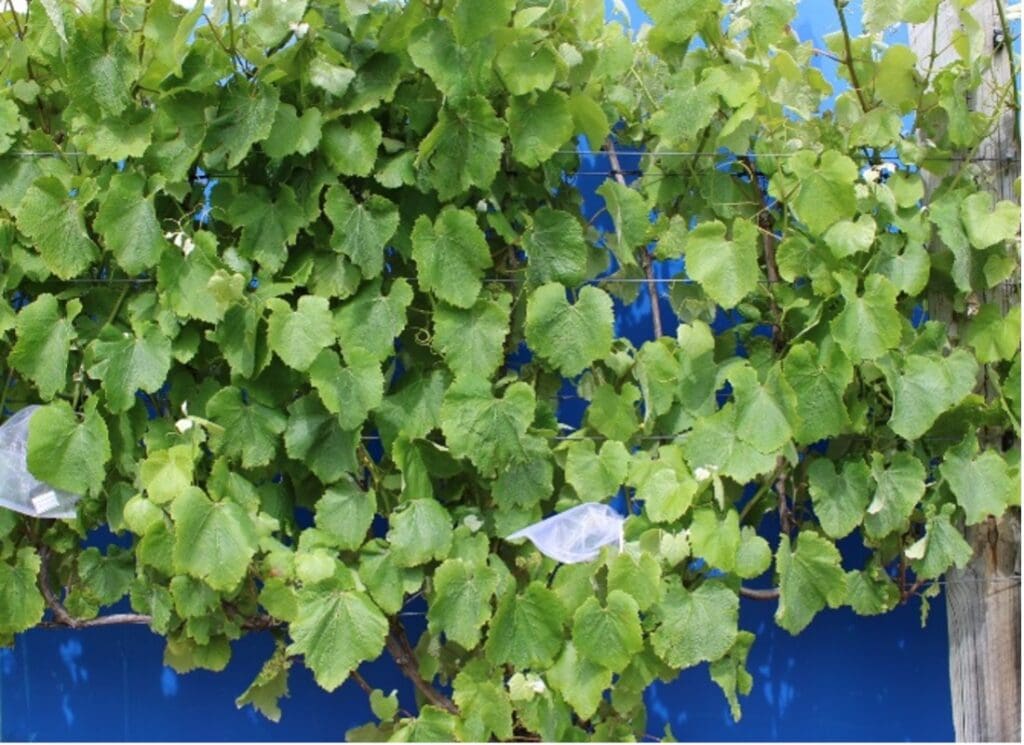 Photo 1. 6VCane vine in December 2023
Photo 1. 6VCane vine in December 2023
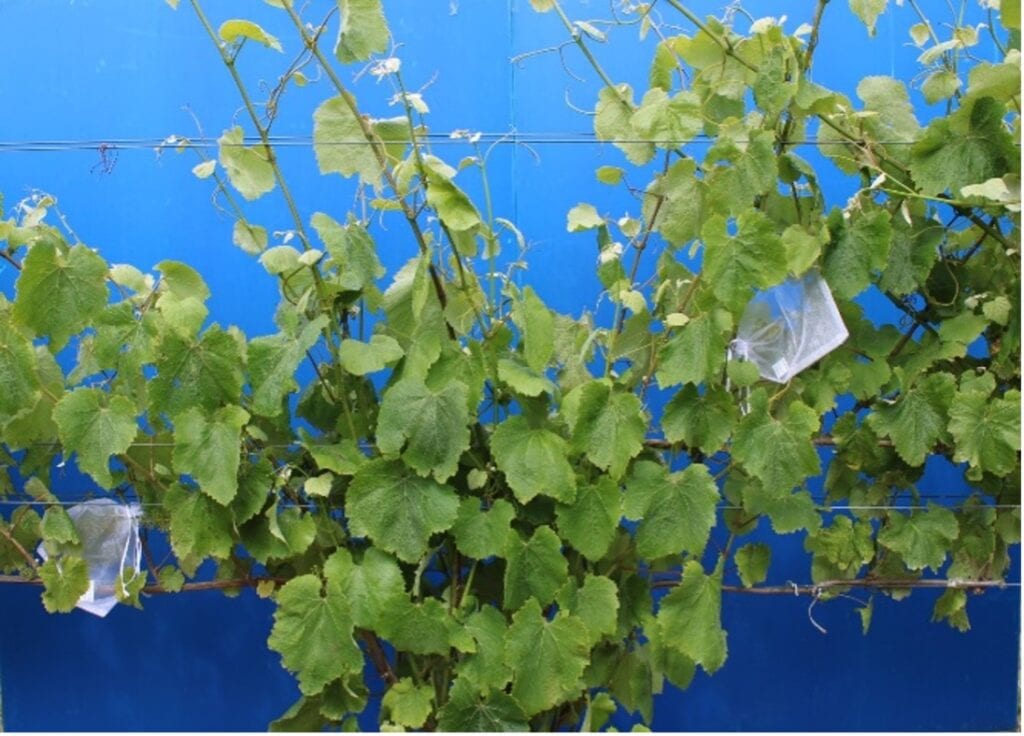 Photo 2. 3Cane vine in December 2023
Photo 2. 3Cane vine in December 2023
Findings
Vineyard
Vines pruned to 6VCane developed significantly more shoots (67 shoots) than the other vine treatments – 37 and 46 shoots for 3Cane and 4Cane, respectively. The number of shoots was closely related to the budburst percentage, which was significantly higher on 6VCane vines (155%) than 3Cane and 4Cane vines.
The higher budburst percentage on 6VCane vines encouraged rapid canopy development. From budburst to veraison, 6VCane vines showed the highest canopy coverage at all three time points, starting at 74.1% (November), rising to 82.0% (December) and reaching 91.1% in February (Figure 1, Photo 1). The 4Cane treatment also exhibited significant growth, with canopy coverage increasing from 69.1%, to 75.0% and then to 81.5% in February (Figure 1, Photo 2).
6VCane vines not only developed canopy faster over time but also grew a larger leaf area. They had the largest total leaf area (9.5m2), the highest number of leaf layers (1.5) and the largest leaf area index (2.1). This result implies that the 6VCane training system promoted greater leaf area and density, which could enhance photosynthetic efficiency and overall plant growth.
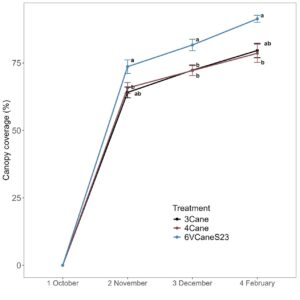 Figure 1. Pre-veraison canopy development. Means with different lowercase letters on the same date are significantly different with the Tukey test at p ≤ 0.05
Figure 1. Pre-veraison canopy development. Means with different lowercase letters on the same date are significantly different with the Tukey test at p ≤ 0.05
Vine yield and vineyard yield were the highest on 6VCane vines, with 4.2kg and 9.5t/ha. The two main drivers of yield were bunch number per vine and average bunch mass. The bunch number per vine on 6VCane was 38, with an average bunch mass of 115.9g and 87.5 berries per bunch.
The 4Cane treatment recorded the second-highest vine and vineyard yield (3.6kg and 8.1t/ha, respectively), driven by the average bunch mass and berries per bunch (126.5g and 96). For the 3Cane treatment, the vine and vineyard yield were the lowest (3.3kg and 7.4t/ha). 3Cane vines had a reduced productivity due to a lower average bunch mass (90.8g) and berries number per bunch (67).
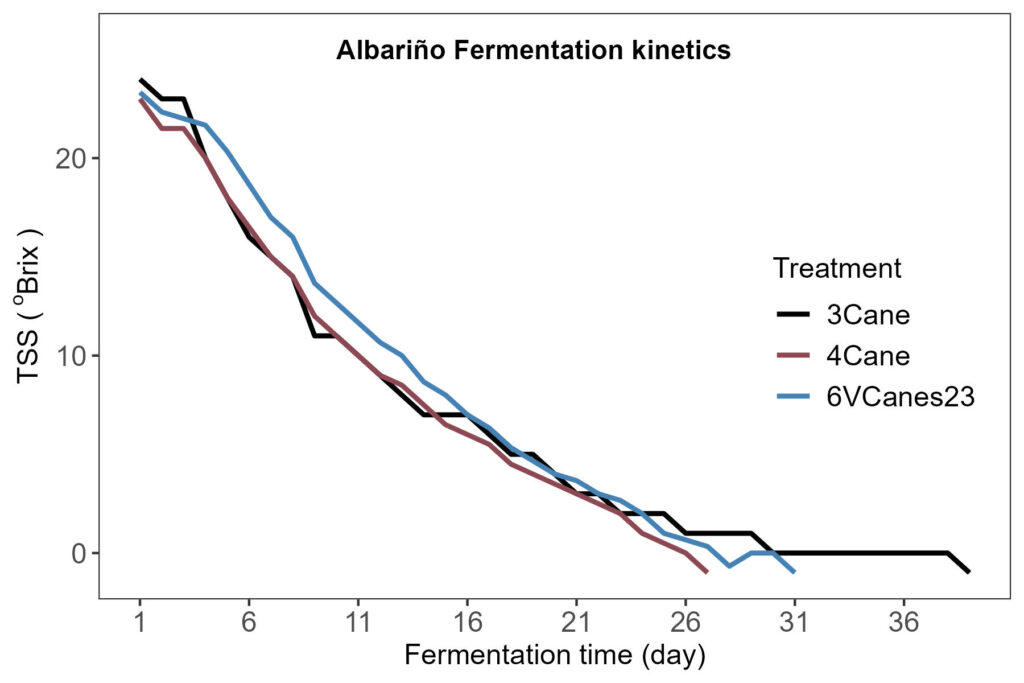 Figure 2. Fermentation kinetics
Figure 2. Fermentation kinetics
Winery
The 3Cane treatment had higher TSS (24.1°Brix) than either 4Cane or 6VCane (both 23.0°Brix). The lower yield, berry number per bunch relative to leaf layer could indicate that sugar accumulation happened at a quicker rate per berry and shrivel started before harvest in 3Cane.
TA and malic acid were lower in 3Cane than in treatments with more shaded canopies, as the malic acid degradation rate increases with increased sunlight exposure. High TSS can cause attenuated fermentations, which was seen in the 3Cane treatment (Figure 2). Fermentation becomes sluggish when high ethanol concentration, in conjunction with high remaining sugars, becomes a toxic environment for yeast at the end of ferment. As a result, wine produced from the 3Cane had esters more in the spectrum of solvent and woody characteristics, rather than fresh fruit.
Increased shading in the vine canopy can increase concentrations of ethyl esters, acetate esters, and fatty acids in wine. The larger vine canopy in the 4Cane and 6VCane treatments seemed to encourage a greater concentration of ester precursors associated with floral, tropical and citrus aromas, resulting in higher levels of ester formation during fermentation. This result was also reflected with sensory analysis.
Conclusion
In New Zealand, Albariño grapevines are currently trained to two-three cane VSP, a training system contrasting with large canopy systems in Galicia, Spain. This research investigated how an alternative training system that mimics a larger vine could affect the agronomic performance of Albariño, the chemical composition of the must, wine and wine sensory perception. Training Albariño grapevines to increase their size upward on a VSP trellis system promoted canopy development and yield with little effect on berry maturity and basic composition.
The 4Cane treatment, with moderate canopy shading and fruit load, contributed to wine perceived to have the most positive sensory attributes including more distinct fruit characteristics and overall complexity, compared to 3Cane and 6VCane treatments. This was supported by the ester and higher alcohol analysis.
Because these effects were measured over a single growing season, they are only indicative. To confirm these positive effects a multi-seasonal multi-site trial will be required.
Acknowledgement
This article was prepared with the contribution of Dr Fang Gou, Bragato Research Institute Data Manager, who analysed the data.
About the project
Thanks goes to Marlborough Research Centre for funding this study, and also to Chandre Honeth at Eastern Institute of Technology for her parallel research into shading of Albariño fruit and aroma development in Hawke’s Bay.




